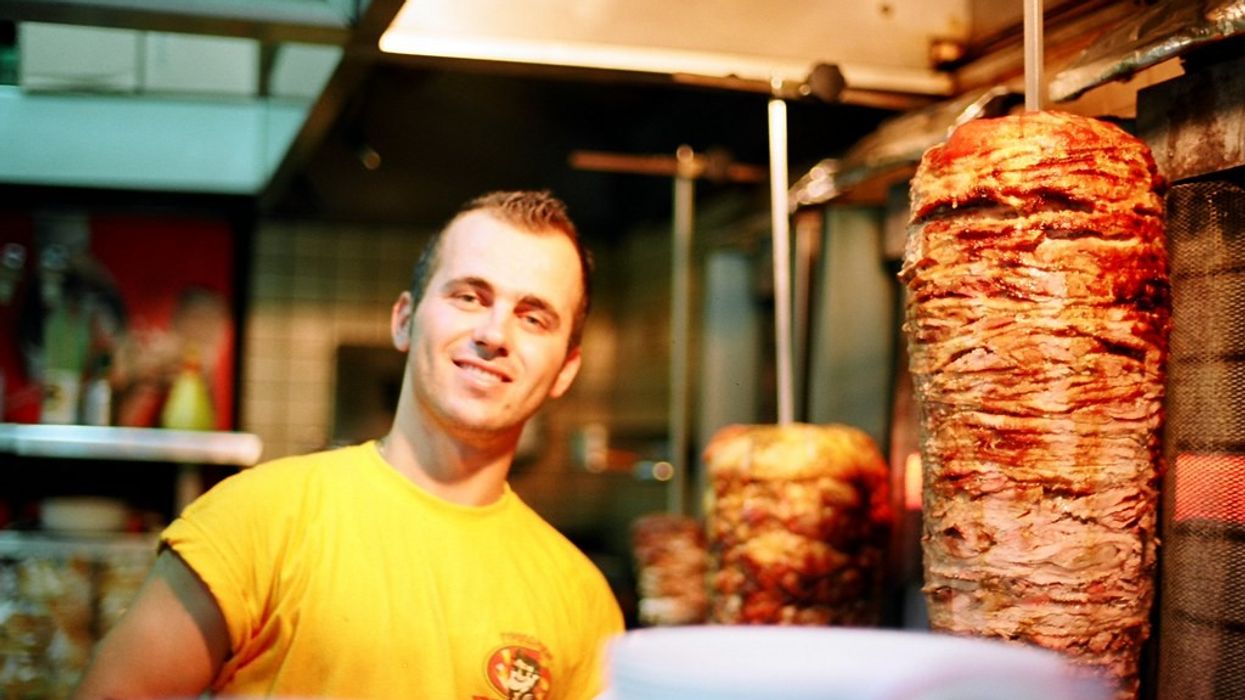Can art convey horror better than statistics? Sadly, it took the devastating image of 3-year-old Aylan Kurdi, face down on a beach in Bodrum, Turkey, to shake us out of our collective apathy towards a migrant crisis years in the making. As a society we’ve become inured to pictures of the dead, even children, but this devastating photo momentarily helped the world to see that the “immigrant mass” is composed of real people, with real stories. This past Saturday French director and filmmaker Yann Arthus-Bertrand screened his sweeping, 3-hour documentary HUMAN at the UN for an audience of diplomats and high-ranking officials including Secretary-General Ban Ki-Moon. The movie was shown in tandem with a presentation at Venice Film Festival. The event, which also honored the 70th anniversary of the United Nation General Assembly, was an ideal setting for this vibrant tapestry of anonymous interview subjects, which varied in ethnicity, age, gender, sexual orientation, and socio-economic levels. Love and happiness to war and poverty were shown without explanation against a plain black backdrop.
While other films have attempted to do what HUMAN does—from Samsara to Happiness—they have been slick and tightly-edited. HUMAN, shot in 60+ countries over three years (culled from almost 2,000 hours of raw footage), feels much like humanity itself—crowded, occasionally messy, exuberant, and frequently tragic. In one scene, the director zooms in on a raft in an impossibly overpopulated waterpark in China. Panned further back, we see that the park is almost the size of a football field—the undulating mass of human bodies a metaphor for the pulsing beat of humanity.
The creator aimed to spark a discussion of “the human condition and the meaning of our existence.” After a private screening last year at Google HQ in California, the web giant was won over and featured a “HUMAN link” on its home page this Saturday, effectively introducing over 6,000,000,000 visitors to the stories of freedom fighters in Ukraine, farmers in Mali, sex workers in Cambodia, and even the private pain of the former Uruguayan president Jose Mujica, an ex-guerilla fighter imprisoned for over a decade.
You might ask “Where did the money come from, and how did this come to be shown at the UN?” The answer is heavy funding by the Bettencourt Schueller Foundation, and the goodwill generated by Arthus-Bertrand’s work with the GoodPlanet Foundation and various philanthropic efforts. Any cynicism aside, the movie is good—though not without flaws. As one viewer lamented, it was both too long and too short, and the narratives would be better served by releasing all 10+ original hours in a PBS-like mini-series format. But on the whole, it gives a stunning visual and aural touchstone for this turbulent period.
In one of the most haunting monologues in the movie, a death row inmate describes the abuse he experienced as a child that ultimately led to a warped view of love—and to murder a woman and her child. In the next sequence, we meet the murdered woman’s mother, who has done the equally unthinkable and befriended this man. “She should hate me, but she didn’t,” he said. “She gave me love, she taught me what it was.” There are endless moments like this that could be saccharine, but are pulled from the brink by their realness.
“Yes, it's individual problems and individual stories, but every story reflects our society,” says Sean Davis, one of the subjects in the film. “The themes that came up [during shooting]—everybody can share in those problems.” Sean is a combat veteran with 14 years’ experience, ranging from the Iraq war, which left him critically injured, to deployments in Haiti and post-Katrina New Orleans. Davis spearheaded the recruitment of combat veterans for HUMAN. Davis also struggled with PTSD, which was helped by the creation of his memoir, The Wax Bullet War. “The art saved me,” says Davis. “[The film] gives people a sense of perspective that they wouldn't see otherwise. In my experience, people would have to go to combat to see this.”
Arthus-Bertrand claims he has no agenda. “This movie is not an answer. It is questions. I want people to ask why their governments do certain things,” he says. “Diplomats aren’t the key. They are not more courageous [than you or me]. Don't wait for the politics to change, change yourself first.”
Vincent Coyle, the film’s coordinator in Ireland and an activist instrumental in the creation of the International Day of Reconciliation (as well as a professional actor), sees urgency in the film. “People have to open their hearts and minds at this time. This is the biggest migration of humanity since the end of the second World War, where people had to rush across borders to safety,” he says. “We need to deal with that in a humanitarian way. What we must remember is these people have a home, they have family, they have gardens! They just want peace so they can return home.”
The current crisis in Europe and the Middle East can’t be fixed by a movie, or even an elevated sense of empathy. But the film stands as a valid reminder to be thankful to be a part of this mess known as humanity. As one Balkan War survivor said with a grin when asked about happiness: “You're alive, so you're happy.”
For more info visit human-themovie.org/













